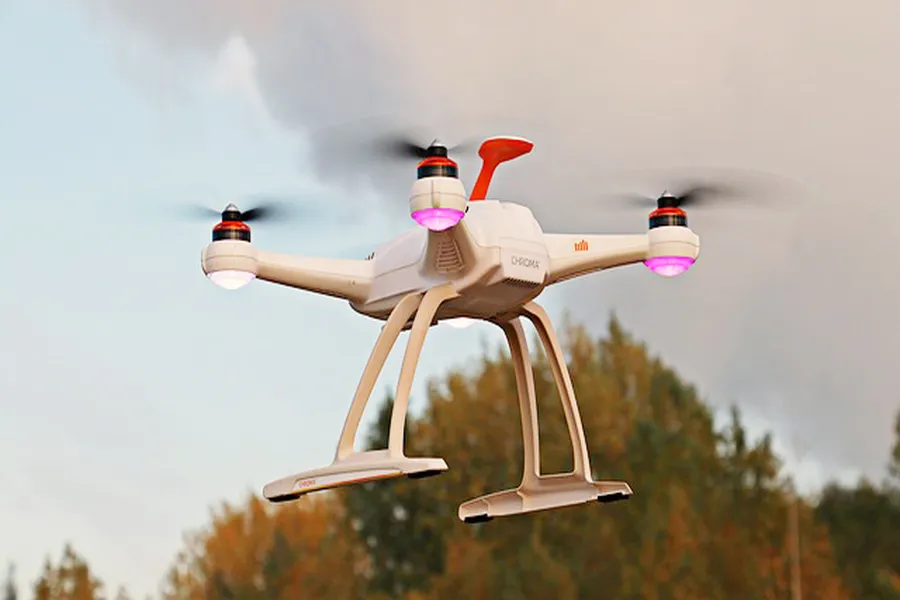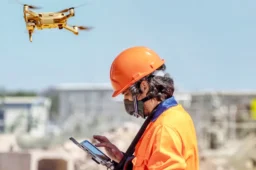
How Much Weight Can a Drone Carry
How Much Weight Can a Drone Carry? It’s More than You Think! The question of how much weight a drone can carry is like asking how fast a car can go. It depends! The answer hinges on factors like drone size, type, motor power, and even wind conditions. But rest assured, drones are capable of lifting much more than just their own weight.
Let’s break it down:
Tiny Toy Flyers: Think palm-sized, buzzing around your living room. These micro-drones barely manage a few grams, ideal for indoor fun but useless for carrying anything beyond a toothpick.
Hobby Heroes: Your typical consumer drone, perfect for aerial photography and recreation. These can carry payloads between 500 grams and 2 kilograms (1-4 pounds). Think action cameras, GoPros, and even lightweight gimbals.
Professional Powerhouses: DJI Inspire, Matrice, Autel EVO II – these beasts are built for serious work. Their powerful motors and robust frames can handle payloads of 5-20 kilograms (10-45 pounds). Imagine high-end cameras, LiDAR sensors, and even heavy-duty searchlights!
Heavyweight Champions:
But wait, there’s more! Enter the realm of heavy-lift drones. These industrial giants, specifically designed for cargo delivery and construction tasks, can lift a staggering 200-500 kilograms (440-1100 pounds)! That’s like a small car or several sacks of cement, soaring through the air.

Beyond Payload: Remember, it’s not just about raw weight. Flight time and distance also play a crucial role. A drone overloaded with a hefty payload might struggle to stay airborne for long or travel far. Finding the right balance between payload capacity and flight performance is key.
Looking Ahead: The future of drone lifting capacity is promising. Advancements in battery technology, motor efficiency, and aerodynamic design are pushing the boundaries. Who knows, we might see drones transporting furniture or even people one day!
So, how much weight can a drone carry? It depends, but the possibilities are exciting! Whether it’s capturing stunning aerial footage, delivering medical supplies, or revolutionizing construction, drones are proving their strength and versatility, one payload at a time.
How much weight can a military drone carry
Asking how much weight a military drone can carry is like inquiring about the firepower of a “military vehicle.” The answer depends heavily on the specific type of drone and its designated role. Military drones, also known as Unmanned Aerial Vehicles (UAVs), come in a diverse range, from nimble scouts to burly cargo haulers. Let’s unpack the weight-lifting capacities across the spectrum:
1. Micro/Mini Drones:
- Payload: A few grams to 1 kg (0.004 – 2.2 lbs).
- Purpose: Reconnaissance, surveillance, close-quarters target acquisition.
- Examples: Black Hornet Nano, Parrot Anafi.
These tiny titans are the eyes and ears on the battlefield, flitting through tight spaces and offering real-time situational awareness. Their weight capacity is limited to miniaturized cameras and sensors.
2. Tactical Drones:
- Payload: 5 – 25 kg (11 – 55 lbs).
- Purpose: Surveillance, target designation, light weapon carriage.
- Examples: MQ-1 Predator, Bayraktar TB2.
These workhorses provide mid-range intelligence gathering and can be armed with missiles or bombs for tactical strikes. Their payloads allow for heavier cameras, laser targeting systems, and even small munitions.
3. Medium-Altitude Long-Endurance (MALE) Drones:
- Payload: 100 – 300 kg (220 – 660 lbs).
- Purpose: Persistent surveillance, electronic warfare, heavy weapon carriage.
- Examples: MQ-9 Reaper, Heron TP.
MALE drones operate at higher altitudes for extended periods, providing continuous over watch and carrying substantial payloads. They can be equipped with powerful radars, electronic jammers, and even Hellfire missiles for larger targets.
4. Heavy-Lift Drones:
- Payload: Over 500 kg (1,100 lbs).
- Purpose: Cargo transport, resupply, platform for specialized equipment.
- Examples: Boeing Phantom Eye, Schiebel Camcopter S-100.
These behemoths are the packhorses of the sky, ferrying critical supplies, setting up communication relays, or carrying specialized sensors like LiDAR for mapping vast areas. Their payload capacity allows for transporting medical equipment, ammunition, or even small vehicles.
Beyond Payload:
Remember, weight capacity is just one piece of the puzzle. Factors like wind conditions, altitude, and mission duration also impact carrying capacity. Additionally, some drones prioritize agility and maneuverability over sheer payload, while others focus on extended range and endurance.
What is the heaviest weight that a drone can lift?
The answer to this question isn’t as straightforward as a simple number. It’s more like a fascinating journey through the diverse world of drones, where payload capabilities range from a pebble to a person! So, buckle up, because we’re about to explore the factors that govern a drone’s lifting prowess.
The “Itty Bitty” Drones:
Think of those nimble, camera-toting companions buzzing around parks and backyards. These small consumer drones, like the DJI Mini series, typically lift between 0.5 and 1 kilogram (1.1 to 2.2 pounds). Imagine carrying a hefty soda or a good-sized book – that’s their limit.
The Mid-Sized Marvels:
Stepping up a notch, we have the versatile mid-size drones like the DJI Mavic series. These aerial workhorses boast payload capacities of 1 to 2 kilograms (2.2 to 4.4 pounds). Picture lugging a small backpack or a camera with accessories – these drones can handle it.
The Heavy-Weight Titans:
Now, let’s enter the realm of industrial and commercial drones. These behemoths are built for serious lifting, hauling payloads of 5 to 20 kilograms (11 to 44 pounds) with ease. Think medical supplies, search and rescue equipment, or even small parcels for delivery!
Beyond the Numbers:
But wait, there’s more! The maximum weight a drone can carry isn’t just about sheer muscle. It’s a delicate dance between several factors:
- Motor Power: More powerful motors translate to more thrust, meaning heavier payloads.
- Battery Capacity: Longer flight times require larger batteries, which eat into payload capacity.
- Aerodynamics: Streamlined design and efficient props minimize drag, allowing for better weight distribution.
- Environmental Conditions: Wind, altitude, and temperature can all impact a drone’s lifting capabilities.
So, what’s the absolute max?
The current king of the heavy-lift drones, the GRIFF Aviation 300, boasts a staggering 500 pounds (226 kg) payload capacity. That’s like carrying a grand piano or a small motorcycle! But remember, such feats are for specialized applications and not your everyday drone experience.
The Future of Heavy Lifting:
With technology constantly evolving, drone payload capacities are bound to increase. We’re on the cusp of seeing drones carrying even heavier cargo, revolutionizing industries like transportation and construction.
Remember:
Always check the manufacturer’s specifications for your specific drone model to ensure you don’t overload it, leading to unsafe flight and potential damage.
Feel free to ask any further questions about specific drone types or their lifting capabilities!





